Caitlin Delaney of CareFully explains how 40 extra seconds of compassionate care helps in Aged Care, her Compassionate Care app, and more valuable tips.
How do I communicate compassionately with patients?
by Caitlin Delaney
Time and again patients tell us that bedside manner, in other words - kindness, truly matters. It’s time we listened.
The scientific evidence to support compassionate care is too great to ignore. And it is not just patients who benefit with longer, healthier lives. Being compassionate can make healthcare professionals happier and less burned out.
In our current Covid-19 world, there has never been more of a need for care - for both patients and healthcare professionals alike. Healthcare workers are required to consistently cultivate compassion, at times via Telehealth appointments, alongside the daily challenges they face in their busy roles.
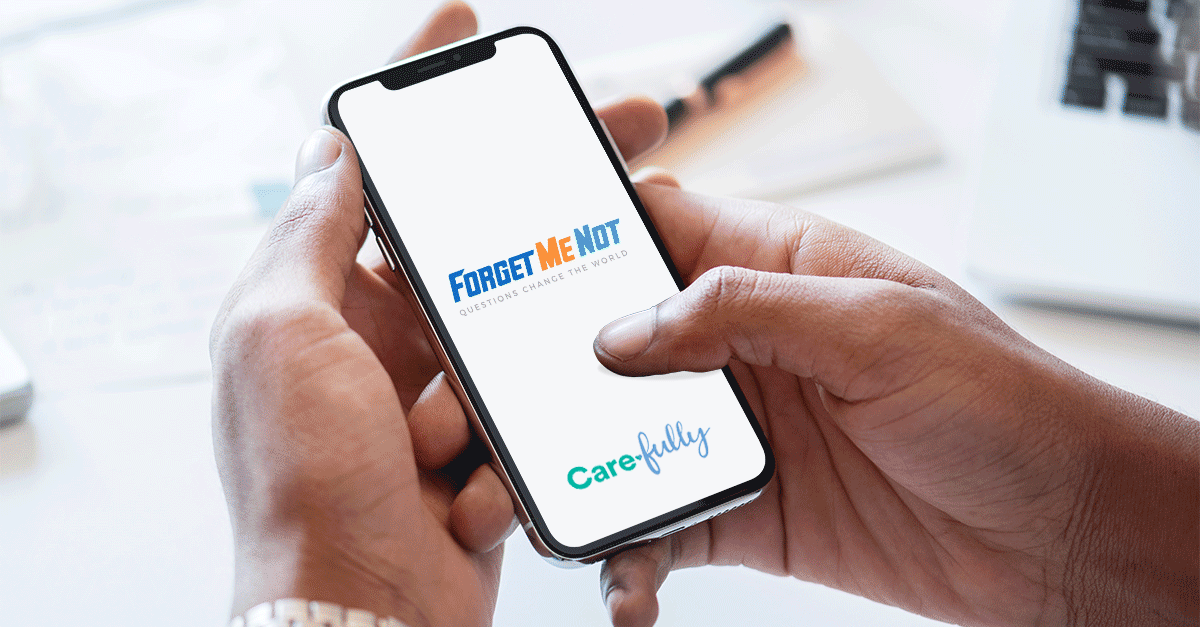
During these challenging covid-19 times, with digital health on the rise, compassionate communication is more important than ever.
The good news is compassionate behaviours can be learned. According to Stephen Trzeciak, author of "Compassionomics”, forty seconds of compassionate communication is all it takes to make a meaningful difference. Trzeciak says that forty seconds of compassionate care could even save a patient’s life.
But what does compassionate care look like and how can healthcare providers ensure that they are getting it right?
CareFully undertook research into this important topic to find out.
What is compassionate healthcare, and why does it matter?
“Love and compassion are necessities, not luxuries.— Dalai Lama
Without them, humanity cannot survive”
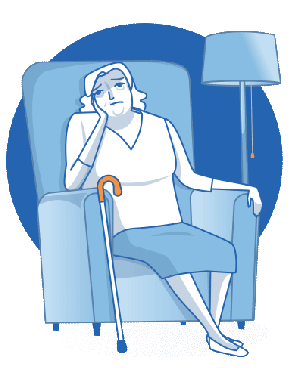
What is compassion?
Empathy is the ability to understand and share the feelings of another. Compassion takes this further. It involves understanding another’s distress, with a desire to alleviate it. Compassion is empathy in action.
Compassion in healthcare involves empathy, sympathy, sensitivity, non-judgment, a tolerance of distress, and a motivation to relieve suffering.
Here at CareFully we believe that compassion should be a core requirement of care and a basic duty in a healthcare professional’s daily work.
What is patient-centred care?
Also known as person or human-centred care, patient-centred care is where the patients actively participate in their own medical treatment in close cooperation with their healthcare providers. It is widely recognised as a foundation for safe, high-quality healthcare. It is care that values individual patient preferences and needs.
Compassion is the foundation of patient-centred care.
What is human centred-design?
 Human-centred design (HCD) is a “creative approach to problem solving…that starts with the people you are designing for and ends with new solutions that are tailor made to suit their needs”. In short, human-centred design is all about “building a deep empathy with the people that you are designing for”.
Human-centred design (HCD) is a “creative approach to problem solving…that starts with the people you are designing for and ends with new solutions that are tailor made to suit their needs”. In short, human-centred design is all about “building a deep empathy with the people that you are designing for”.
True patient-centred care is a great example of human-centred design.
Why is compassion so important in healthcare?
“Compassionate care for me has been the ability of medical staff to really listen to my concerns and fears, and to re-assure when appropriate. It is always good to feel there is time to really talk things over.”
— Breast Cancer Survivor
Ten years ago, an internet search for “Compassion and healthcare” yielded almost no results. Today we are beginning to realise that compassion is as important in healthcare as technical skills. Mounting scientific evidence demonstrates that patient outcomes are dependent on how much our healthcare providers care.
The primary goal of compassionate patient-centred care is to improve the patient experience and individual health outcomes. But healthcare professionals and healthcare systems benefit too. Some benefits are:
- Improved satisfaction rates from patients and families.
- Better morale and productivity reported from healthcare professionals.
- Increased patient adherence to their prescribed medications.
- Fewer mistakes and a reduction in malpractice cases.
- More informed and appropriate resource allocation.
- Reduced costs and increased financial gains throughout the system of care.
- Enhanced reputation of the healthcare industry as a whole.
In short, compassionate, patient-centred care can result in healthier and happier patients and lower health care costs. What’s more, it leads to healthier and happier staff, and there is even evidence that being compassionate may protect health care providers from burnout.

CareFully has a unique dual insight into the healthcare industry, spearheaded by our founder Caitlin Delaney. As both a patient and healthcare professional, Caitlin has witnessed first-hand the difference compassion can make to the patient experience, and ultimately the patient outcome.
For CareFully founder Caitlin, little acts of kindness made all the difference to her cancer journey.
“The use of touch and eye contact, and genuine interest in how I was, made me feel cared about.”
CareFully Researches Compassionate Communication
At Carefully, we understand that compassionate communication is the foundation of compassionate care. And we know that to truly understand compassionate care, we must listen to the receivers of care - the patient. A recent HCD course presented the perfect opportunity for CareFully to research what compassionate care looks like.
For this course CareFully proposed the following human-centred design challenge:
“How can we build compassionate communication tools to support people when speaking with cancer patients?”
Although this study was related to cancer patients, the results are relevant for any healthcare provider.
CareFully interviewed 30 cancer patients, their carers, family and friends, alongside cancer health care professionals to find out what factors influenced compassionate communication.
Gaining further insight, CareFully interviewed psychologists and communication experts, all of whom had been touched by cancer or worked in the cancer space.
To immerse themselves in context, CareFully team members drew on their own experiences - they have either had cancer or cared for those with cancer. The CareFully team also sought out analogous inspiration by studying interactions in their daily lives where compassionate communication took place. CareFully found that certain businesses provided fabulous customer service, which ultimately involved excellent communication.
The result? This made the CareFully team feel cared about as individuals.
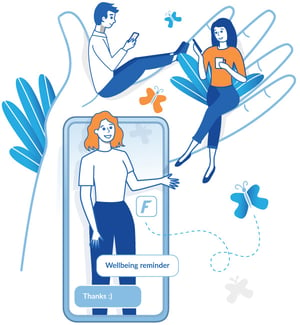 Qualitative analysis of findings revealed three key insights. These insights shaped a prototype; a tool to support compassionate communication for healthcare providers. This tool captures real-time feedback from patients about their experience, in particular with regards to compassionate, patient-centred care. Rich data is subsequently used to support staff via tailored training programs and staff support services, either in person or digitally.
Qualitative analysis of findings revealed three key insights. These insights shaped a prototype; a tool to support compassionate communication for healthcare providers. This tool captures real-time feedback from patients about their experience, in particular with regards to compassionate, patient-centred care. Rich data is subsequently used to support staff via tailored training programs and staff support services, either in person or digitally.
Contact us to find out more about their compassionate care tool and how it could help your business.
How can I communicate compassionately with patients?
It is true that some people are more wired for compassion than others. But the good news is that compassion can be learned. Below, CareFully shares some of their tips on how to communicate compassionately with patients.
 Smiling, being positive, and taking the time to build rapport can make a huge difference to a patient’s experience.
Smiling, being positive, and taking the time to build rapport can make a huge difference to a patient’s experience.
Adopt excellent customer service skills.
When healthcare professionals use excellent customer service skills, their patients feel cared about. Some tips are:Tip Number 1: Validate patients’ emotions.
Validating feelings is essential if people are to feel heard and respected. This involves recognising peoples feelings and acknowledging them as important. Only when we have acknowledged a patient’s feelings and made them feel ok about them, should we move on to offering solutions to their problems or sharing information. Below is an example of a doctor and patient interaction where the doctor either validates or dismisses a patients feelings:
 Doctor:
Doctor:
“How are you feeling today?”
Patient:
“Not great actually. I feel really down and am worried about chemo and surgery.”
Doctor (Validating response)
“I can totally understand why you would be feeling that, this is really tough stuff. We are going to look after you, and we are going to get through this together. We are here for you”.
Doctor (Dismissive response):
“Oh don’t worry you will be fine, you are in good hands! Just try and think positively!”
Tip Number 2: Be friendly and authentic.
“All the staff were so friendly…the receptionist was always smiling and happy, which lifted my mood as soon as I walked in.”
— Cancer Patient
When we think of excellent customer service this invariably brings to mind friendly and authentic staff who will go out of their way to help you. Staff who are grumpy, negative, or disingenuous will never make you feel cared about.
Be conversational and sociable - revealing some of your personality and being personable is a great way to build rapport with a patient. It is ok to share aspects of your personal life, such as kids or hobbies, as this makes the healthcare provider appear more human and ‘normal’. Humour, where appropriate, is also a great tool.
Cultivate curiosity towards your patients.
If we are curious about a patient, compassionate body language and communication will naturally follow.

Being curious about your patients will naturally lead to compassion.
Some tips for fostering curiosity are:
Tip Number 3: Treat the first appointment with your patient like a ‘first date’.
Recognise that your first interaction with a patient is the start of a relationship and act accordingly. Find out the patient’s likes, dislikes, interests, communication preferences, and boundaries. We find common ground by asking questions, and actively listening.
Tip Number 4: Treat the patient, not the disease.
Time and again we hear from patients that they want to be treated ‘normally’. If we see patients as a person, with their unique needs, values and preferences, then we are practising true patient-centred care.
“Patients can feel marginalised and powerless...Talk to them like they are healthy and ‘normal’ and treat them as an equal.”
— Oncology Professor/Surgeon
Foster self-awareness of your communication style
How do you know if you are communicating compassionately with patients or not? Many organisations place more emphasis on technical skills over soft skills. It is not standard to up-skill or provide feedback on staff’s communication skills.
Some tips for building self-awareness are:
Tip Number 5: Encourage feedback from patients and peers.
Any organisation committed to patient-centred care and excellence should include the patient voice via feedback. Asking your peers and manager about your communication style is also recommended. You can even ask patients for direct feedback - you can ask them if they are happy with how you are caring for them, or if there is something else you could start doing or stop doing.
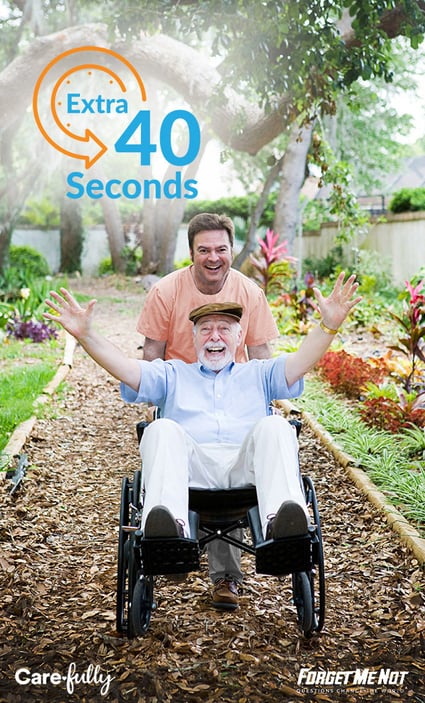
Tip Number 6: Look to role models of compassionate care.
Is there someone in your organisation who embodies compassionate care? If so, shadow them and ask them for advice. You can also look at situations where communication has not been great, as an example of what not to do. Sometimes the best learning occurs when things don’t go well.
Tip Number 7: Practise self-compassion and set boundaries.
Self-compassion and forgiveness are essential. We are not always going to get it right, and that is ok. We can’t cultivate compassion towards others if we’re not compassionate with ourselves. It is also essential to have healthy boundaries to avoid compassion fatigue and burnout.
Tip Number 8: Empower patients to communicate their needs and preferences.
Patients need help with communicating too! Communication is two way, and the onus isn’t all on the healthcare provider. You can ask patients what their communication preferences are such as in the following example:
Nurse:
“I know that am giving you lots of new information, which can be overwhelming and hard to take in. Some patients like to know everything, and some patients just want the bare minimum. Please let me know what you like and if there is anything else you need from me during these appointments.”
Summary: Compassionate Communication Tips
- Use customer service skills, such as being positive, friendly, and approachable. Validate the patient’s concerns and feelings, don’t minimise them. Build rapport by revealing your personality and using humour where appropriate.
- Be curious about your patients. Look them in the eye, ask curious questions, and listen to what they say. Treat the patient, not the disease, and tailor care to suit their needs (don’t just use a ‘one size fits all’ approach).?
- Reflect and build self-awareness on your own communication style. Ask your peers, managers, and patients for feedback and take it on board. Look to role models of compassionate care, what do they do? Practice self-compassion and know your boundaries to avoid compassion fatigue. Empower patients to communicate their preferences.
Closing
 We know that compassionate care matters. The good news is that compassion can be learned and implemented without costing any more time. Compassionate communication may be all it takes to make a meaningful difference.
We know that compassionate care matters. The good news is that compassion can be learned and implemented without costing any more time. Compassionate communication may be all it takes to make a meaningful difference.
CareFully’s research, which critically included the patient perspective, revealed 8 handy tips for compassionate communication. These tips can be implemented immediately by healthcare professionals and all those who want to be more compassionate in their professional and personal daily lives.
How can we help you?
Do you want to foster excellence in compassionate patient-centred care?
Are you actively connecting your healthcare professionals with the voices and perspectives of your patients?
CareFully and Forget Me Not have been working together to improve Compassionate Care in the Health and Aged Care sector. Caitlin Delaney works with numerous clients to advise and train staff members on supporting older Australians with the utmost care and respect.
The Compassionate Care app provides multiple learning opportunities to practice compassion in just 1 to 5 minutes a day, accessible whenever and wherever is most convenient for an individual carer. Get in touch with Caitlin at CareFully for further information about the App, or for information about a Compassionate Care program for your staff.
It's time to care about Aged Care
Trial Forget Me Not today. Please complete your details below and we will be in touch to arrange access to the App.
References:
https://www.compassionomics.com https://www.merriam-webster.com/dictionary/compassion#note-1
https://www.safetyandquality.gov.au/our-work/partnering-consumers/person-centred-care
https://www.designkit.org/human-centered-design
https://jcompassionatehc.biomedcentral.com/articles/10.1186/s40639-015-0015-2
https://pubmed.ncbi.nlm.nih.gov/27992278/
https://bmjopen.bmj.com/content/8/3/e019701
https://catalyst.nejm.org/doi/full/10.1056/CAT.17.0559
https://www.ncbi.nlm.nih.gov/pmc/articles/PMC6739068/
https://www.ncbi.nlm.nih.gov/pmc/articles/PMC4939589/
https://www.wikihow.com/Validate-Someone%27s-Feelings
https://www.psychologytoday.com/au/blog/hope-relationships/201503/4-ways-be-more-authentic-person
https://en.wikipedia.org/wiki/Active_listeninghttps://en.wikipedia.org/wiki/Person-centered_care
https://en.wikipedia.org/wiki/Compassion_fatigue https://en.wikipedia.org/wiki/Self-compassion
https://www.safetyandquality.gov.au/our-work/partnering-consumers/person-centred-care

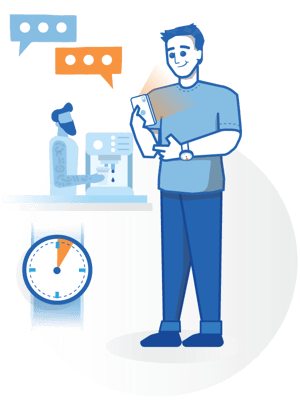

 "AnglicareSA have worked with Obvious Choice for many years, and personally I have worked with them across different industries. James Stack and his team are the elite professionals in the Learning and Development contemporary learning space. They offer tailored, value add solutions and are always across best practice. Their research into how individuals and teams learn is quite ground-breaking, and they offer practical options based on this research and their experience".
"AnglicareSA have worked with Obvious Choice for many years, and personally I have worked with them across different industries. James Stack and his team are the elite professionals in the Learning and Development contemporary learning space. They offer tailored, value add solutions and are always across best practice. Their research into how individuals and teams learn is quite ground-breaking, and they offer practical options based on this research and their experience".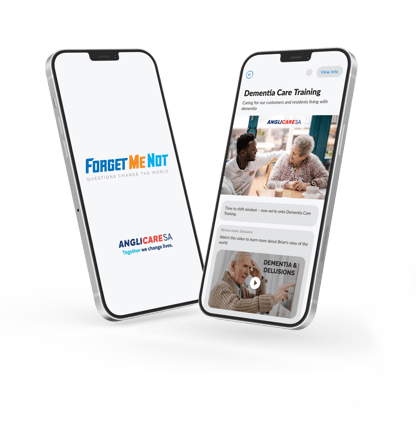
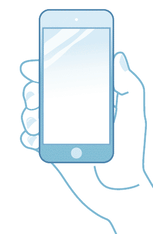 Easy and Convenient
Easy and Convenient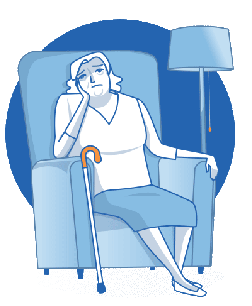
 "A key business benefit of using the Forget Me Not microlearning app is getting analytics on what staff know and don’t know about dementia care. Unlike Forget Me Not, traditional online learning doesn't show us what staff originally knew or didn't know or how they mastered dementia care knowledge over time." he said.
"A key business benefit of using the Forget Me Not microlearning app is getting analytics on what staff know and don’t know about dementia care. Unlike Forget Me Not, traditional online learning doesn't show us what staff originally knew or didn't know or how they mastered dementia care knowledge over time." he said.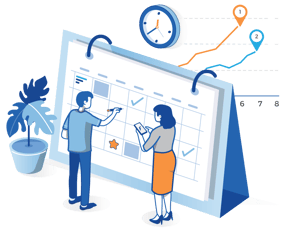
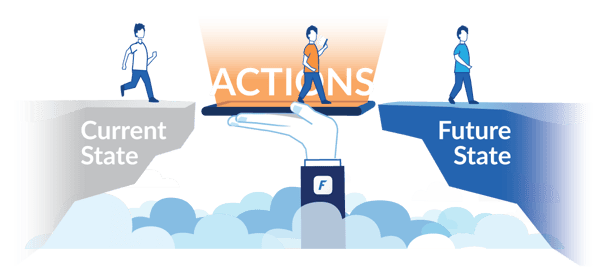

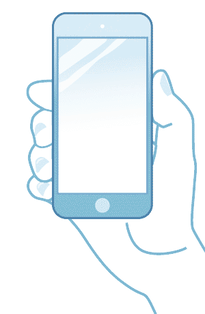 Implementing microlearning in the form of a mobile app shows a company is progressive and committed to the adoption of digital trends.
Implementing microlearning in the form of a mobile app shows a company is progressive and committed to the adoption of digital trends. 3. Microlearning creates a learning culture
3. Microlearning creates a learning culture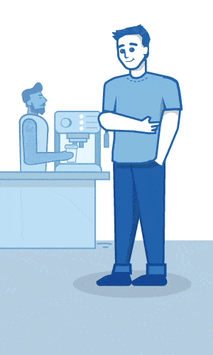 4. Microlearning builds employee confidence
4. Microlearning builds employee confidence 5. Microlearning builds inclusive cultures
5. Microlearning builds inclusive cultures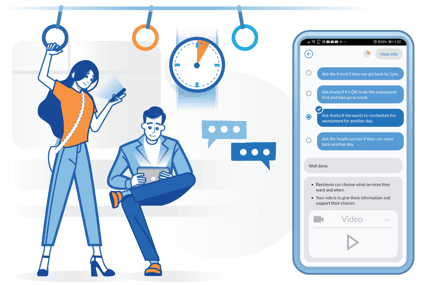
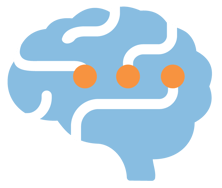 Three techniques to improve knowledge retention
Three techniques to improve knowledge retention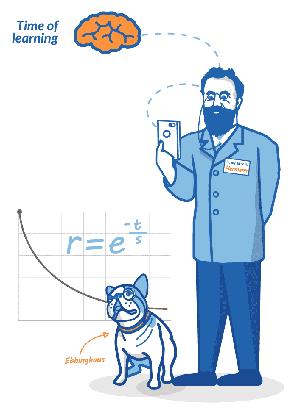 1. Adopt microlearning
1. Adopt microlearning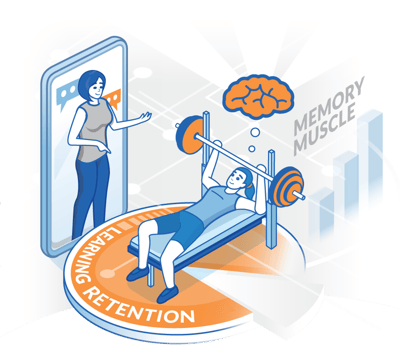 2. Use spacing and testing
2. Use spacing and testing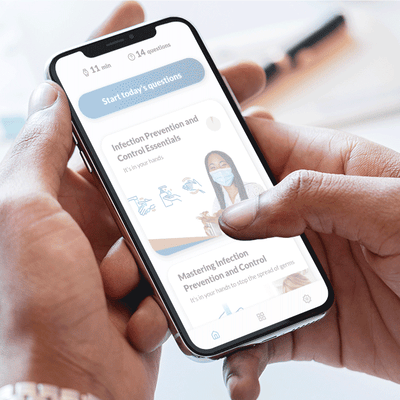

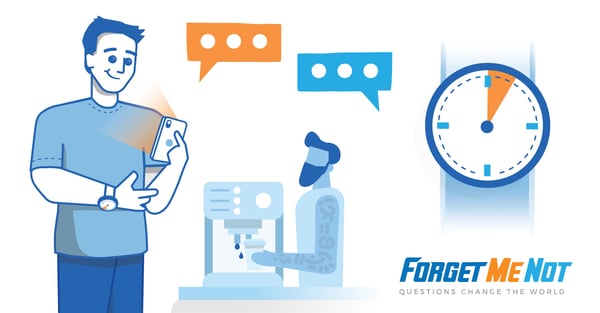


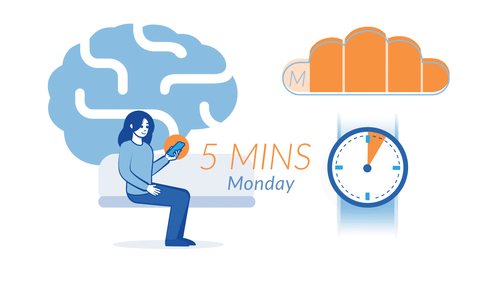
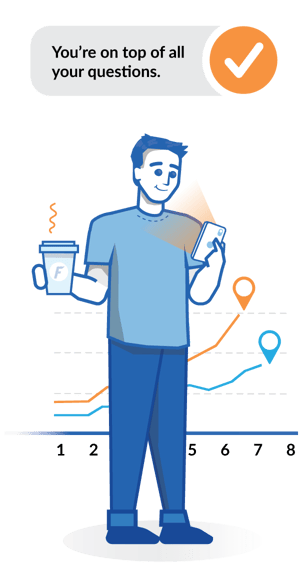
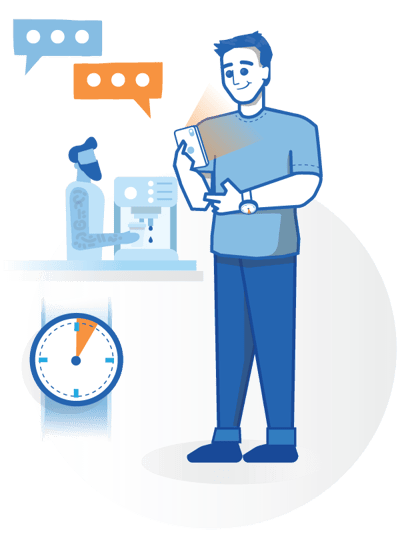 Microlearning provides one way of visualising ‘little’ digital experiences. Microlearning uses short, focused interactions targeting an increase in learners’ knowledge and skills across a single topic.
Microlearning provides one way of visualising ‘little’ digital experiences. Microlearning uses short, focused interactions targeting an increase in learners’ knowledge and skills across a single topic.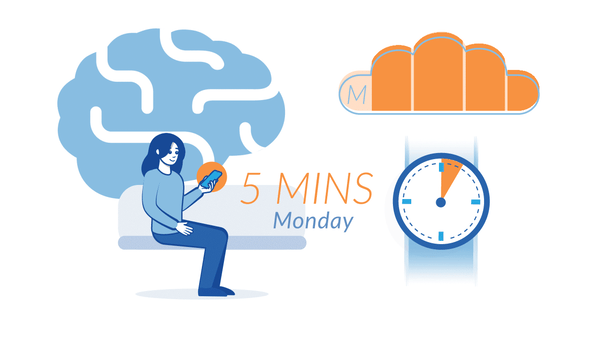 Micro-learning is a form of ‘digital chunking’… and just like
Micro-learning is a form of ‘digital chunking’… and just like 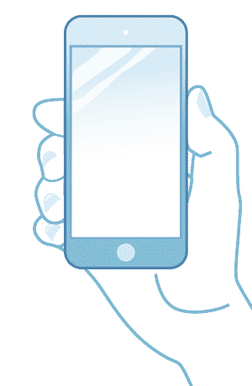 So, our brain and our digitally dependent lifestyles can take advantage of an approach to learning that chunks knowledge and skills into microlearning experiences that are continuously consumed at a time and place set by the learner.
So, our brain and our digitally dependent lifestyles can take advantage of an approach to learning that chunks knowledge and skills into microlearning experiences that are continuously consumed at a time and place set by the learner.
 Most research indicates mobile use levels have outstripped time spent on ‘traditional’ computers such as laptop since about 2014. And as part of this trend we have witnessed the rise of mobile ‘apps’.
Most research indicates mobile use levels have outstripped time spent on ‘traditional’ computers such as laptop since about 2014. And as part of this trend we have witnessed the rise of mobile ‘apps’. Consistency vs Intensity
Consistency vs Intensity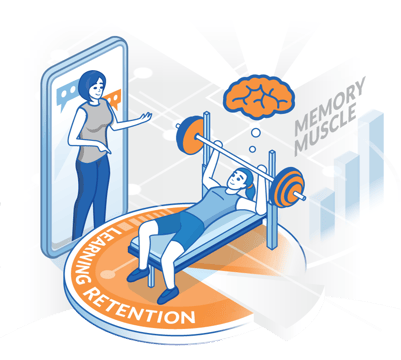 APP Learning
APP Learning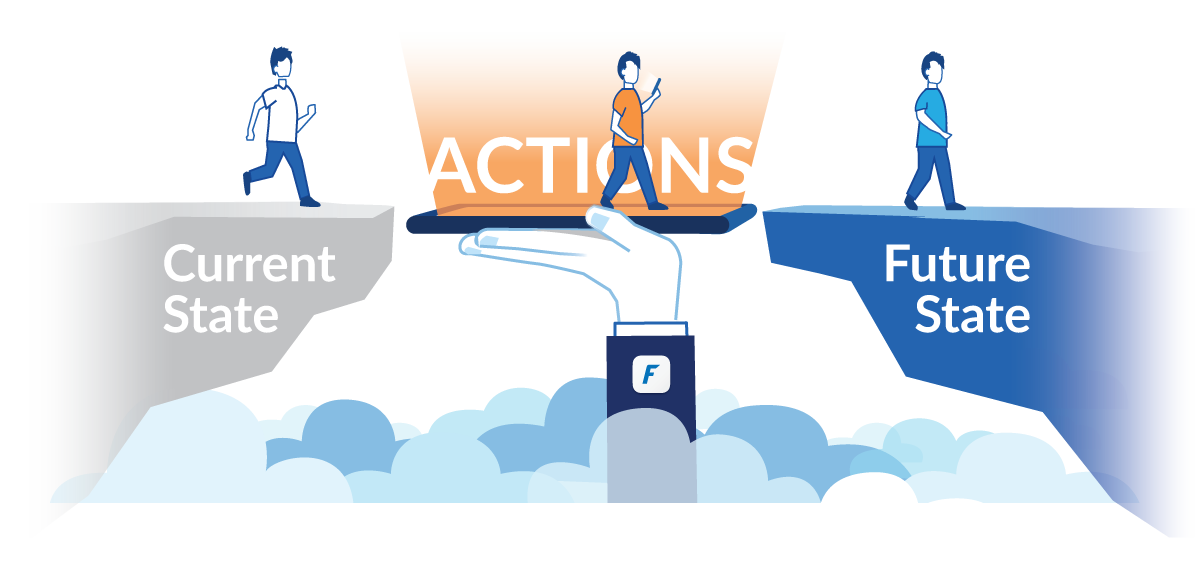

 In every superhero story there has to be a super-villain. And ours is no exception. The villain in our story is traditional learning and it has been around (and doing the same thing) for a very long time.
In every superhero story there has to be a super-villain. And ours is no exception. The villain in our story is traditional learning and it has been around (and doing the same thing) for a very long time.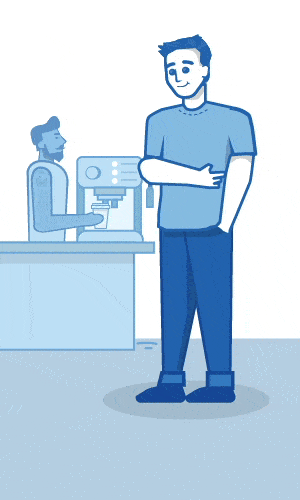 Remember the name
Remember the name  Our superpower doesn’t come from the sun or from a radioactive spider. It comes from
Our superpower doesn’t come from the sun or from a radioactive spider. It comes from 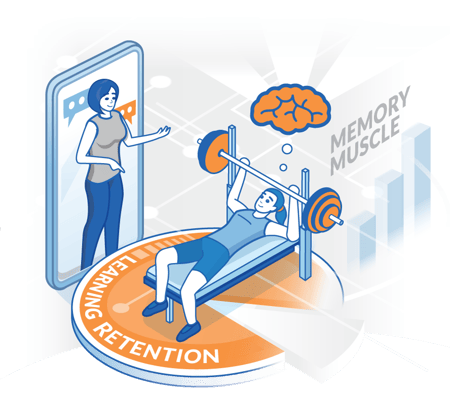 How Forget Me Not can super-power up your training
How Forget Me Not can super-power up your training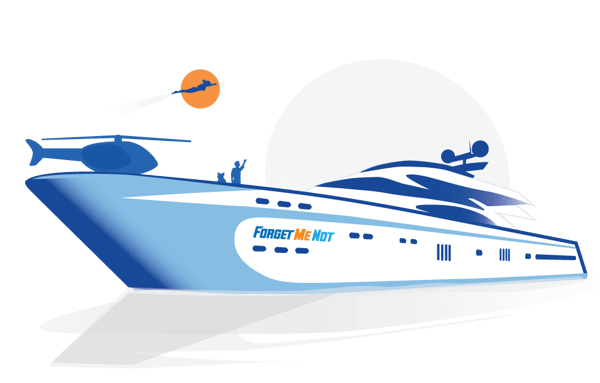
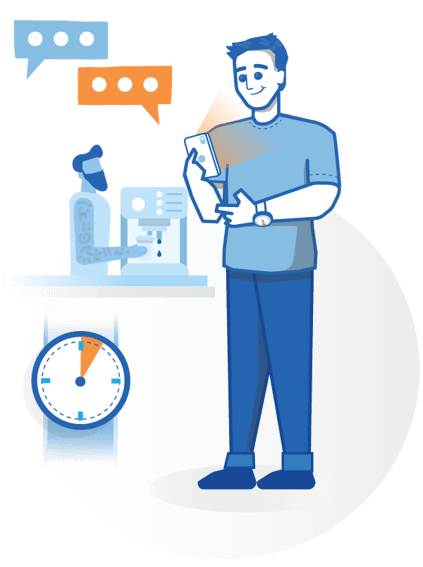
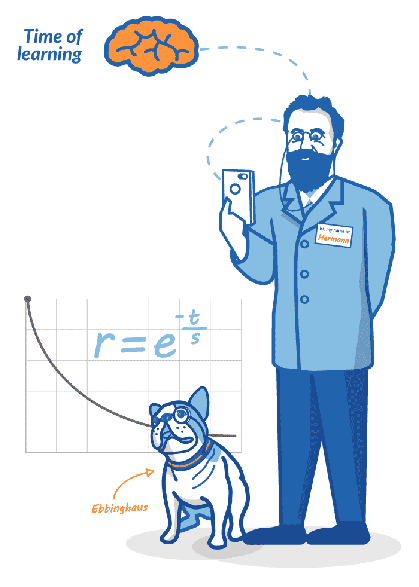 To further compound the problem of traditional training, recent replicated studies of the
To further compound the problem of traditional training, recent replicated studies of the 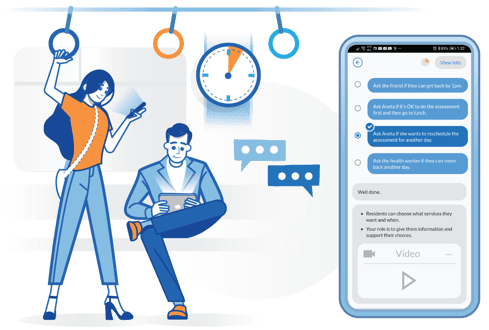 Questions are a powerful learning tool but …
Questions are a powerful learning tool but …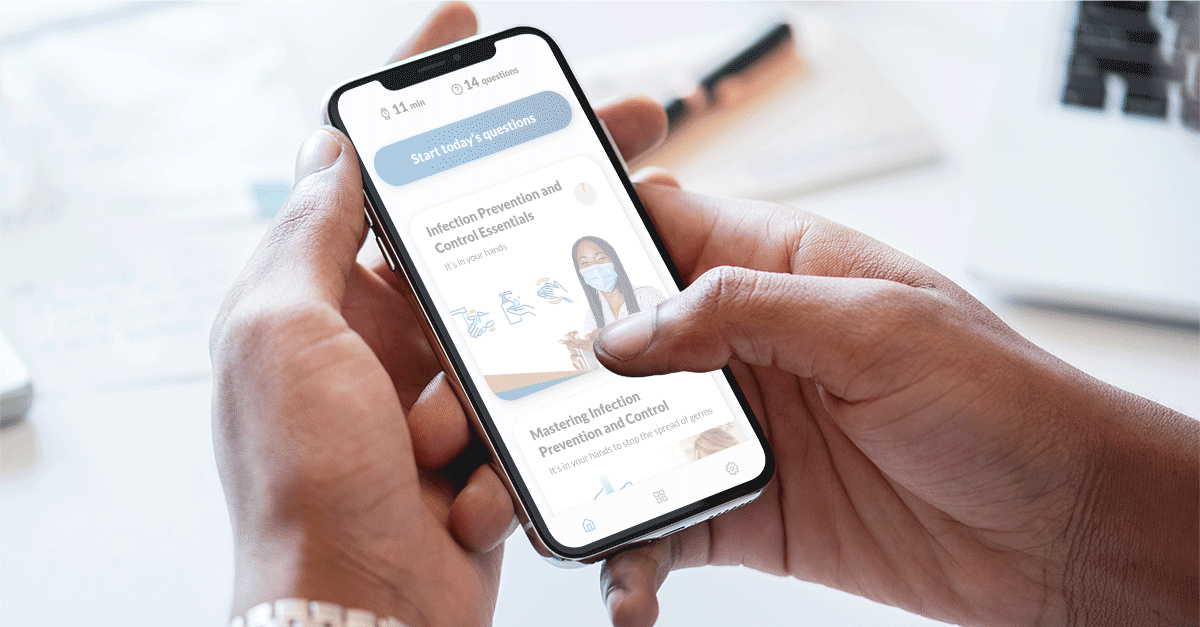
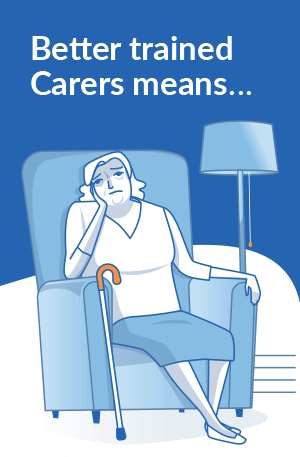
 The aged care sector suffers from severe difficulties in recruiting, training, and retaining staff.
The aged care sector suffers from severe difficulties in recruiting, training, and retaining staff. Unfortunately, however, aged care is a notoriously time-poor sector, with employees working long and physically demanding shifts. As a result, they are often too tired, both mentally and physically to sit down in front of a computer and complete elearning modules. A little and often approach to learning is a more suitable alternative.
Unfortunately, however, aged care is a notoriously time-poor sector, with employees working long and physically demanding shifts. As a result, they are often too tired, both mentally and physically to sit down in front of a computer and complete elearning modules. A little and often approach to learning is a more suitable alternative. 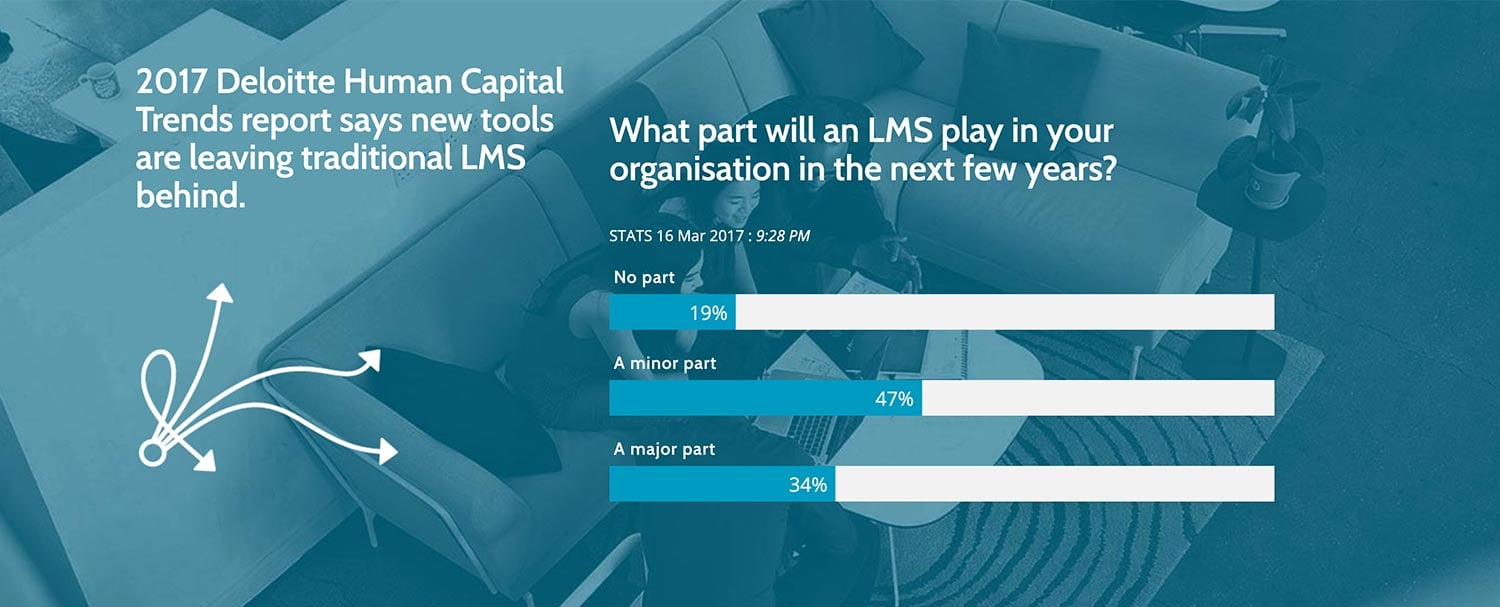
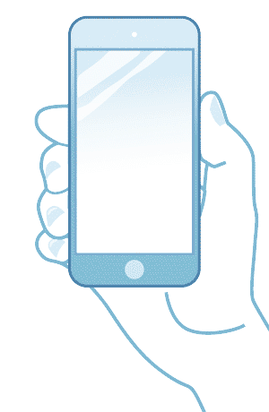 The Result?
The Result?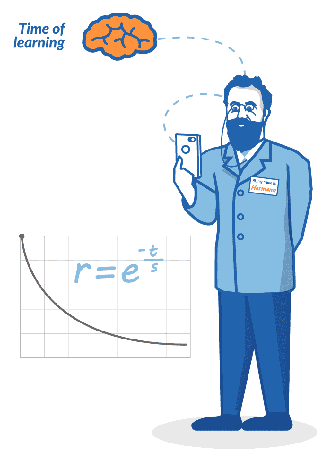 Microlearning
Microlearning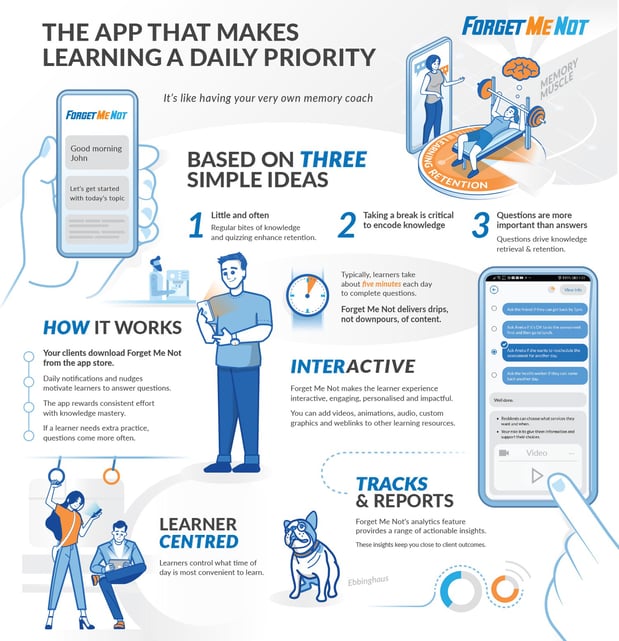
 BETTER TRAINED STAFF =
BETTER TRAINED STAFF =